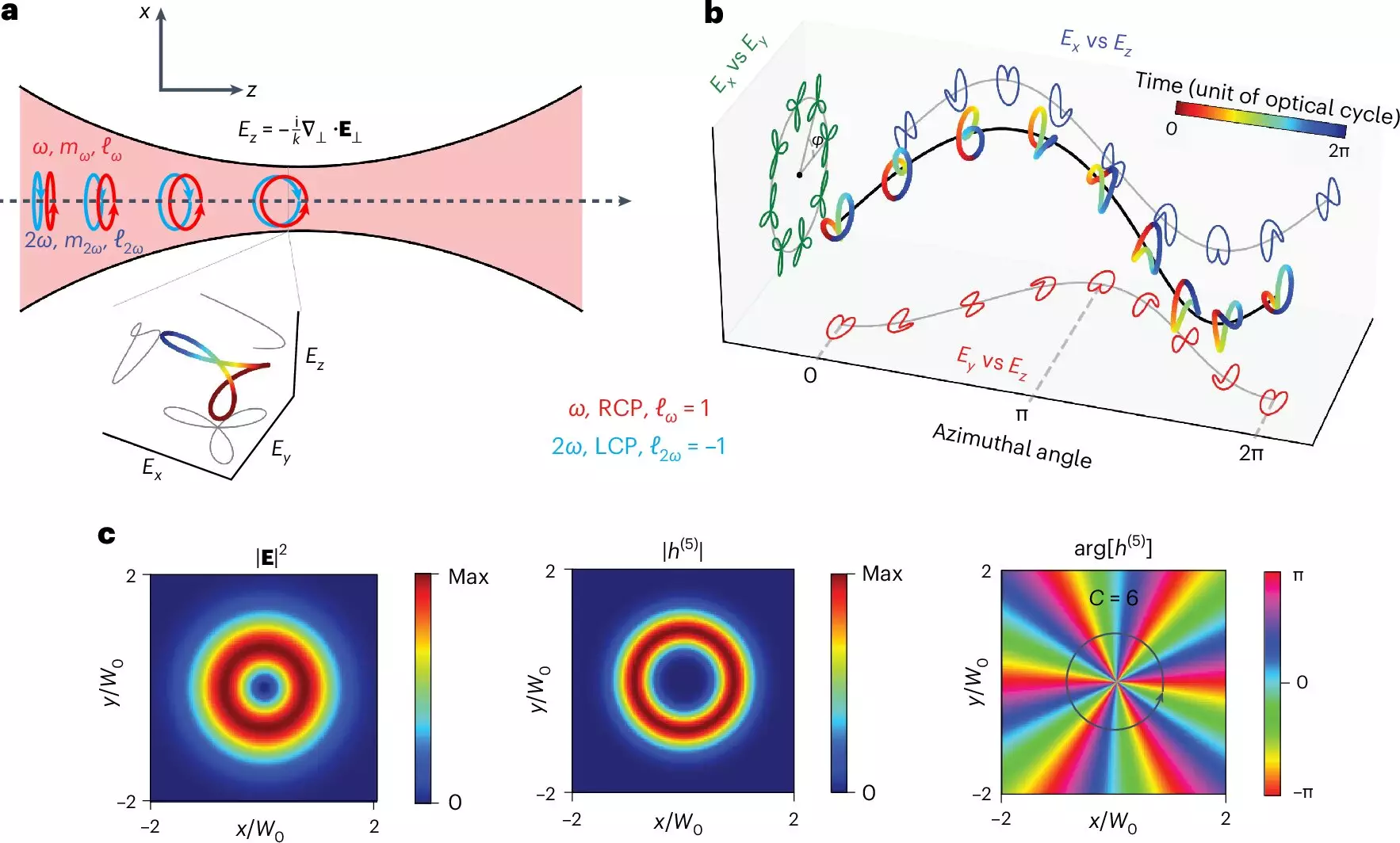Chirality, a fundamental concept in chemistry and biology, refers to the geometric property of a molecule that is not superimposable on its mirror image. This asymmetry is crucial in different scientific fields, especially in pharmacology, where the specific “handedness” (left or right) of a drug can have significant effects on its efficacy and safety. Classic examples include thalidomide, a drug infamous for its adverse effects linked to the chirality of its molecular structure. Recognizing the urgency for precision in chirality detection, researchers have embarked on pioneering methods that enhance measurement accuracy. The recent breakthrough reported in *Nature Photonics* introduces an innovative approach that leverages a new structure of light—a chiral vortex—to revolutionize how chirality is measured.
In collaborative research from King’s College London and the Max Born Institute, scientists have engineered a chiral vortex that reveals distinct shapes in light at different points in space. This dynamic light structure moves through chiral molecules, uniquely interacting with them and facilitating an unprecedented level of measurement accuracy. The essence of this innovation lies in how the electric field of light traces a chiral curve over time, modifying its handedness as one orbits around the beam. Traditional optical methods, often hampered by their reliance on weak signals from standard magnetic fields, struggle to discern the subtle variances in chirality.
The chiral vortex provides a transformative solution, harnessing the physical properties of light robustly. By employing a phenomenon known as high-harmonic generation—now recognized for its Nobel Prize-winning significance—this new method can detect molecular handedness dynamically. When chiral molecules interact with the vortex, they emit photons in a specific, discernible pattern. This intricate pattern reflects the molecule’s handedness, allowing for precise discrimination even in scenarios where the composition of right-handed and left-handed molecules is nearly equal.
The implications of enhanced chirality measurement are enormously relevant, particularly in light of tragedies like the thalidomide scandal from the 1950s. The legacy of thalidomide serves as a chilling reminder of the consequences that can arise from inadequate understanding of chirality in pharmaceuticals. The inherent risk associated with racemic mixtures—including the right- and left-handed versions of thalidomide—illustrates a critical need for rigorous testing protocols to seek out potentially harmful molecular variations.
The newly developed technique addresses this urgent need by empowering drug developers to identify hazardous variants that may exist even in minuscule amounts. The ability to accurately measure a slight excess in either chirality component—such as 49% right-handed versus 51% left-handed—could greatly influence the safety and effectiveness of pharmaceutical products released to the market. Dr. Nicola Mayer, a key researcher in this study, highlights that even minor deviations in concentrations can lead to life-altering consequences, underscoring the importance of this advancement.
One remarkable attribute of the chiral vortex is its robustness against typical challenges faced in chirality experiments, such as variations in light intensity. This resilience serves to democratize chirality detection, allowing a broader range of researchers to conduct accurate measurements without being overly dependent on expensive equipment or large sample sizes. It simplifies the detection process, making it considerably more accessible to laboratories that previously faced limitations in evaluating chiral properties.
In focusing on how this pioneering approach modifies the emitted light pattern from chiral samples, scientists can infer minute differences in handedness much more intuitively. The implications cross the conventional boundaries of chemical analysis, providing insights that could encompass new methods for shaping electronic behaviors and influencing chemical reactions using light.
Looking ahead, the innovative chiral vortex might extend beyond immediate applications in pharmaceuticals. Speculations abound that such advancements could bolster quantum computing by increasing the data-carrying capacity of quantum bits. Imprinting left- or right-handedness within these bits might pave the way for new forms of quantum coding, enhancing processing power and informational integrity.
The ongoing exploration into the intersections of light and molecular chirality reveals a thrilling frontier not only for pharmaceutical safety but also for radical advancements in technology. The chiral vortex represents a profound shift toward more reliable and accurate methodologies, ultimately enriching our understanding of molecular interactions and outcomes in various fields of science.


Leave a Reply